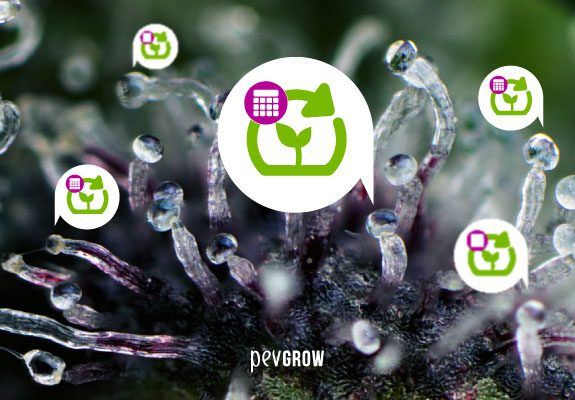

28-01-2022 09:00:46 - Updated: 28 January, 2022
Which is the best time to harvest these genetics? How do I have to cut my photodependent or autoflowering cannabis plants to get the most cerebral effect? What to look for to know the optimal harvest time?
All these questions have the same answer, the trichomes of marijuana, because it is necessary to be clear about their function and the states they go through to determine the optimal point of maturation. In this article we are going to try to clarify all doubts in this regard, and incidentally we are going to put photos so that everything is much clearer, so read carefully what comes next …
⚠️ What are trichomes in plants
Although the word trichome comes from the Greek and means hair, in reality they have nothing to do with hairs other than their appearance. Plant trichomes are small glands that form in the epidermis of some types of plants and other living things, and they have different vital functions.
The trichomes in marijuana are also called resin, possibly because of their sticky texture that is reminiscent of the substance secreted by pines and other types of tree. However, they also have nothing to do with the trichomes or the resin that other plants produce naturally, those of cannabis are unique.
🧐 Where are maria trichomes found?
You can see them on the surface of the buds and the small leaves attached to them. They can also appear in some large leaves and even in the petioles but to a lesser extent, although it is true that over the years many genetics are evolving and the most modern varieties contain resin everywhere.
Cannabis trichomes start to be produced from a very young age, although they cannot be seen with the naked eye until the plants begin to flower. There are glandular and non-glandular trichomes, and within these there are up to 6 different types of trichomes in cannabis plants.
👾 Types and function of marijuana trichomes
- Simple unicellular trichomes: They are very small and thin, so much so that they apparently look like hairs that cover the stems of the seedlings, the cotyledons, and the first pairs of leaves. It seems that its only function is to help retain moisture, improve perspiration, and thermally insulate small plants during the first stages of their life.
- Cystolithic trichomes: Very similar to simple unicellular trichomes, but they are longer and get their name from a cystolith that they form at their base. These trichomes begin to emerge on the first pairs of actual leaves that plants develop early in vegetative growth. Its function is believed to be to repel possible predators, since they give a rough and rough touch to these leaves.
- Sessile glandular trichomes: It could be said that they are the first “real” trichomes that the plant produces, since these already generate the aromatic and psychoactive compounds that we like so much. They do not contain a stem, as a base they only have one cell that joins their head with the epidermis, and their size does not usually exceed approximately 25 microns.
- Bulbous trichomes: They are normally between 10 and 20 microns in size, so they are among the smallest trichomes, and they begin to appear on the first leaves and stems during growth. They consist of a head that can be attached to the surface of the plants through a small foot or 2 cells together.
- Sessile anteral trichomes: They are the largest sessile trichomes, since they can reach a size of 80 microns or more, and their name comes because they usually appear in the anthers, although they can also appear in the calyces and other areas of the buds. They are one of the most interesting for our purposes, since they tend to produce large amounts of cannabinoids, terpenes, and other compounds.
- Notched glandular trichomes: At first they can be confused with sessile trichomes, because their head does not reveal the stem it contains, which grows as maturation progresses. The head also increases in size as it is filled with essential oils, and can end up with a measurement of between 70 and 120 microns normally. Due to size, quantity, and concentration of aromatic and psychoactive compounds, notched glandular trichomes are the favorites of marijuana users, especially those who love extractions or concentratesos.
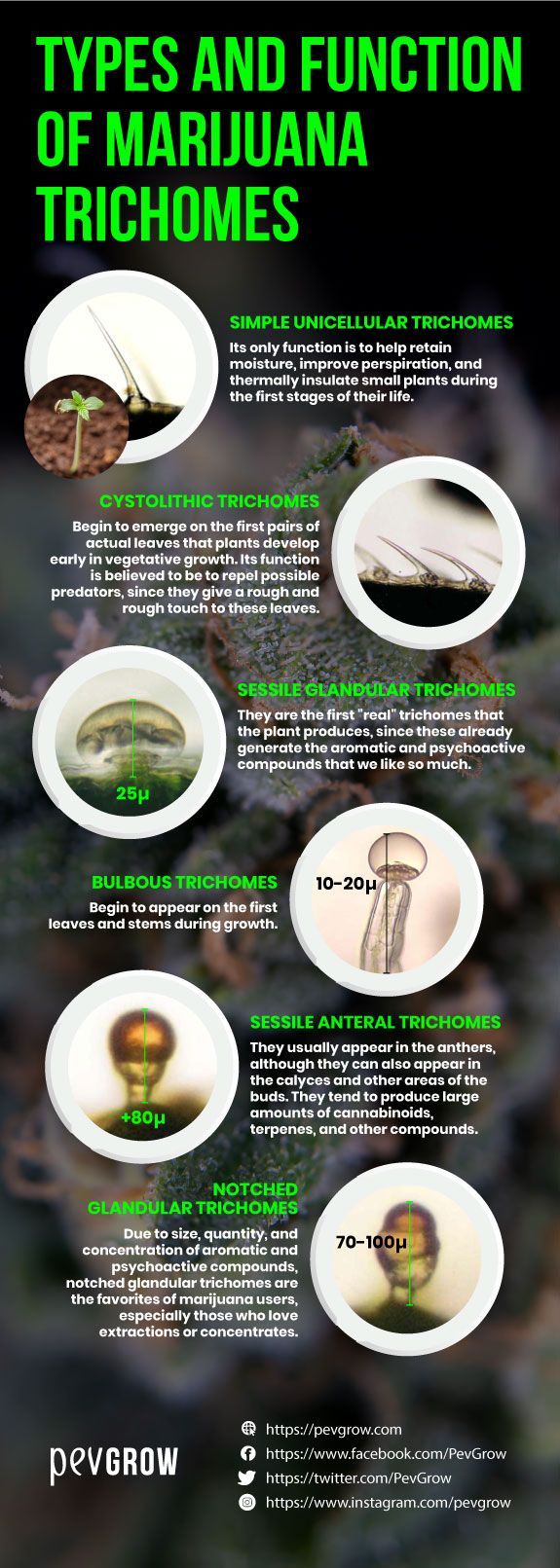
🎯 Colors of trichomes and their maturation
The trichomes that produce essential oils such as cannabinoids and terpenes, change color as they mature, and this can serve as a marker that indicates the optimal point for the marijuana harvest. At the beginning they are transparent, since the head does not contain any compound at the beginning, so they do not appear in any color. They then turn whitish, increasingly solid, until they reach a milky white total. Later they acquire an amber color that warns that they are already reaching their end, and if you let them mature further they will end up with a darker reddish color.
It must be clarified that not all trichomes mature at the same time, so we move by percentages or by majorities, that is, we will choose the ideal moment when we see around 50% of the amber trichomes, but at that moment you will find a 30% milky in color, 15% transparent, and 5% dark red. This is just an example, so you know that it cannot be said that it is best to harvest with trichomes of one color, because you will always see several colors at the same time. This is so because the buds are formed by the union of many flowers that have arisen at different times, and each one of them has its own state of maturity.
Trichomes transparent and immature
Transparent trichomes indicate that the buds are still immature to harvest, so not worth it and cut that contain only essential oils , so they won’t have much flavor or potency. It is the first state that cannabis resin passes through, and at that time they have not yet started producing active compounds.
Milky trichomes, cerebral effect
When most of the trichomes are milky white it is a good time to harvest if you like the cerebral and less physical effect, since at this moment marijuana already contains enough cannabinoids to offer high psychoactivity. The organoleptic properties are also much better than when the trichomes are transparent, but they would not have reached their optimum point yet.
Amber trichomes, physical and narcotic effect
When most of the trichomes are amber in color, the effect of that herb is perceived less psychoactive but much more physical, the kind of leverage on the couch. From a medicinal point of view it can be the best state of maturation, because the narcotic and analgesic side is enhanced, especially to alleviate pain or help to fall asleep.
Very dark or stale trichomes
If you a marijuana plant, it’s trichomes overripe turn darker and darker reddish, indicating that they are overripe or overripe. In this case, the effect is very similar to cutting with most amber trichomes, but the aroma and flavor will have varied somewhat, in some cases for the better, but not in others.
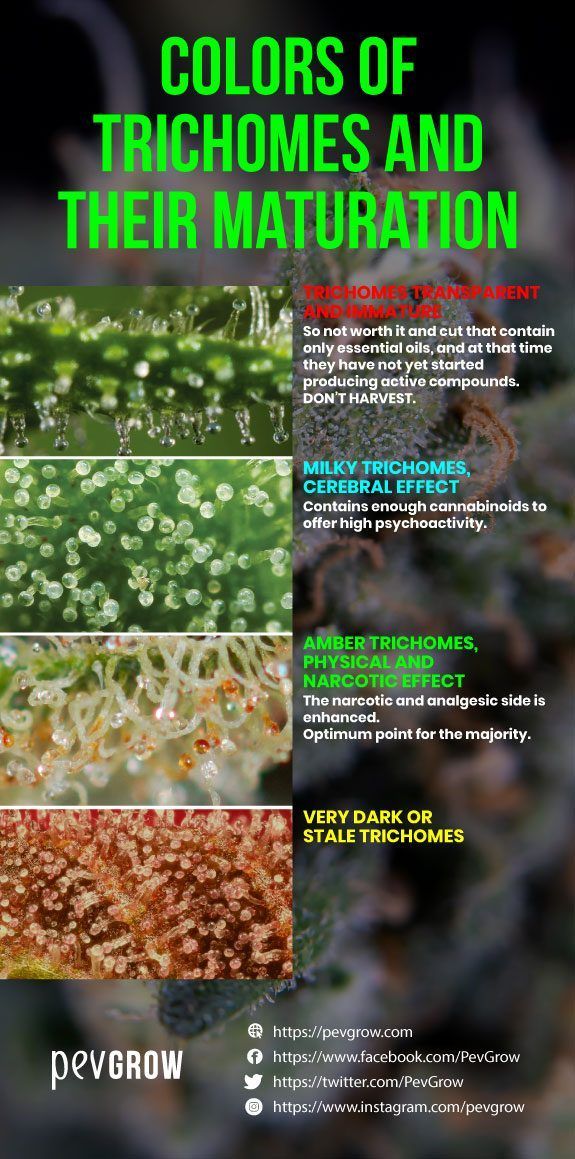
🚀 Photos of trichomes ready to cut
In the following photo you can see the optimal harvest point if you like the effect not to be very bodily:
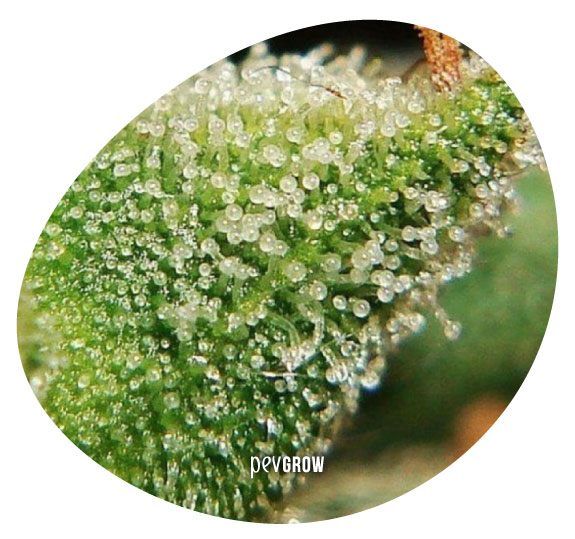
In this other photograph you can see an ideal state of maturation to harvest marijuana that has a balanced effect, where a good percentage of amber trichomes can be seen:
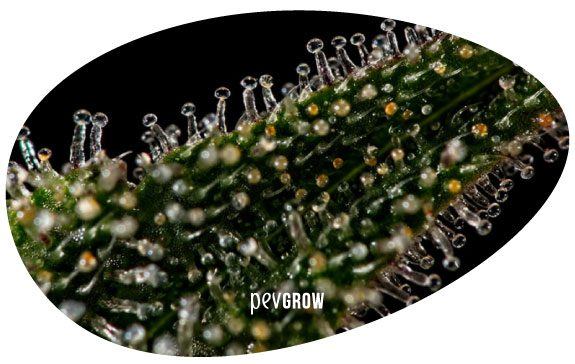
✅ How to see trichomes with a magnifying glass?
A normal magnifying glass is not highly recommended, since it takes between 60 and 100 times to be able to clearly appreciate the color and condition of the trichomes. Luckily there are some models of cheap loupe to see trichomes that work very well, since the magnification can be adjusted and they contain a light that helps a lot to differentiate the colors.
The best thing about these magnifying glasses is their manageable size, which allows us to hold them with one hand while we take a bud with the other to see its trichomes. It is not necessary to fully glue the magnifying glass, as this can break the outer layer of the delicate glands, just leaving about half a centimeter between the magnifying glass and the bud.
You also have the possibility of checking the maturation of the trichomes with an optical microscope, but these come equipped with a base where you have to place the piece of leaf or bud that you want to observe. The advantage of viewing the trichomes with an optical microscope is the convenience on the one hand, and the fact that the sample is still so that it can be observed in depth on the other hand.
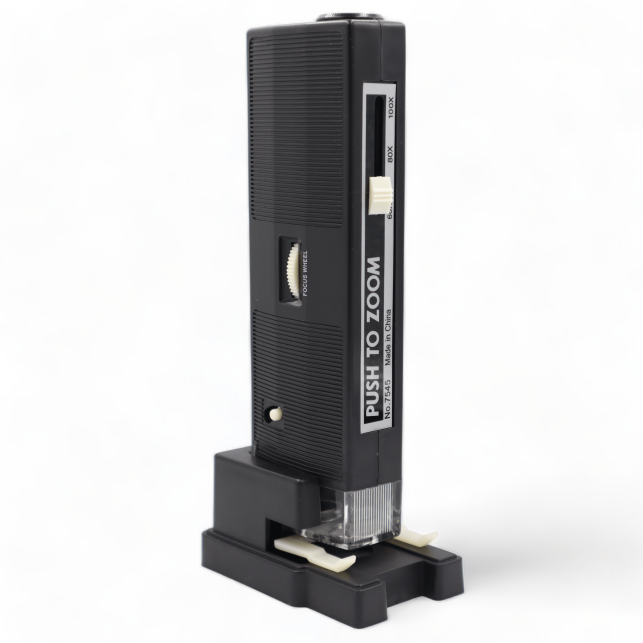
This design has not been applied previously in any other microscope…
-It allows to zoom in and zoom out the light of the lens.
-Light with built-in light
-Can even be used as a flashlight
-Lens can be easily adjusted for a sharper view
-Zoom 60x a 100x
✨ How to see trichomes without a magnifying glass
Trichomes can be seen with the naked eye, although in this way it is almost impossible to accurately determine their state of maturity, because the colors cannot be clearly distinguished. Fortunately, most of today’s smartphones have cameras with macro focus technology, which allows taking photos from less than a centimeter away, so we can capture an area of a bud that can then be enlarged to see the color of the bud well. trichomes. However, for the price of special magnifying glasses or microscopes to see trichomes, it is really worth investing to be able to work properly.
⛳ Magnifying glass app to see trichomes
If your mobile phone does not have a good camera, you also have the possibility of downloading an app that acts as a magnifying glass or microscope to see trichomes, which greatly amplifies the magnification of the camera of our device. It works just like any other handheld microscope, you can hold the smartphone with one hand and hold a branch with the other to get a good look at the resin.
With this magnifying glass application you can see the state of the trichomes quite well in real time, but the best thing is that you can take photos in different parts of the plants, to later check their maturity point in a calm way, without having to be with the buds caught.
⭐ Conclusion
Now you can choose the optimal time to harvest your plants cannabis, because in this article we have seen the different stages of maturation of trichomes and the effect they cause in each of their phases, so you no longer have an excuse to achieve the best buds.
📲 Frequently Asked Questions
When do trichomes start to appear?
In fact, they start to come out practically as soon as the plants sprout, because even in the cotyledons they contain small trichomes. But if we talk about the type of trichome that interests us, those that contain THC, CBD, and other cannabinoids and essential oils, they do not begin to appear until the flowering of the plants begins
What Plants Have Trichomes?
Although they are not the same type as those of cannabis, there are plants such as nettle or magnolia, or even trees like the olive tree that contain trichomes, and they serve different functions such as retaining moisture or reflecting sunlight. But trichomes can also be found in algae, lichens, and other living things.






Thanks, Mr. Blanco
Everything CRYSTAL clear.